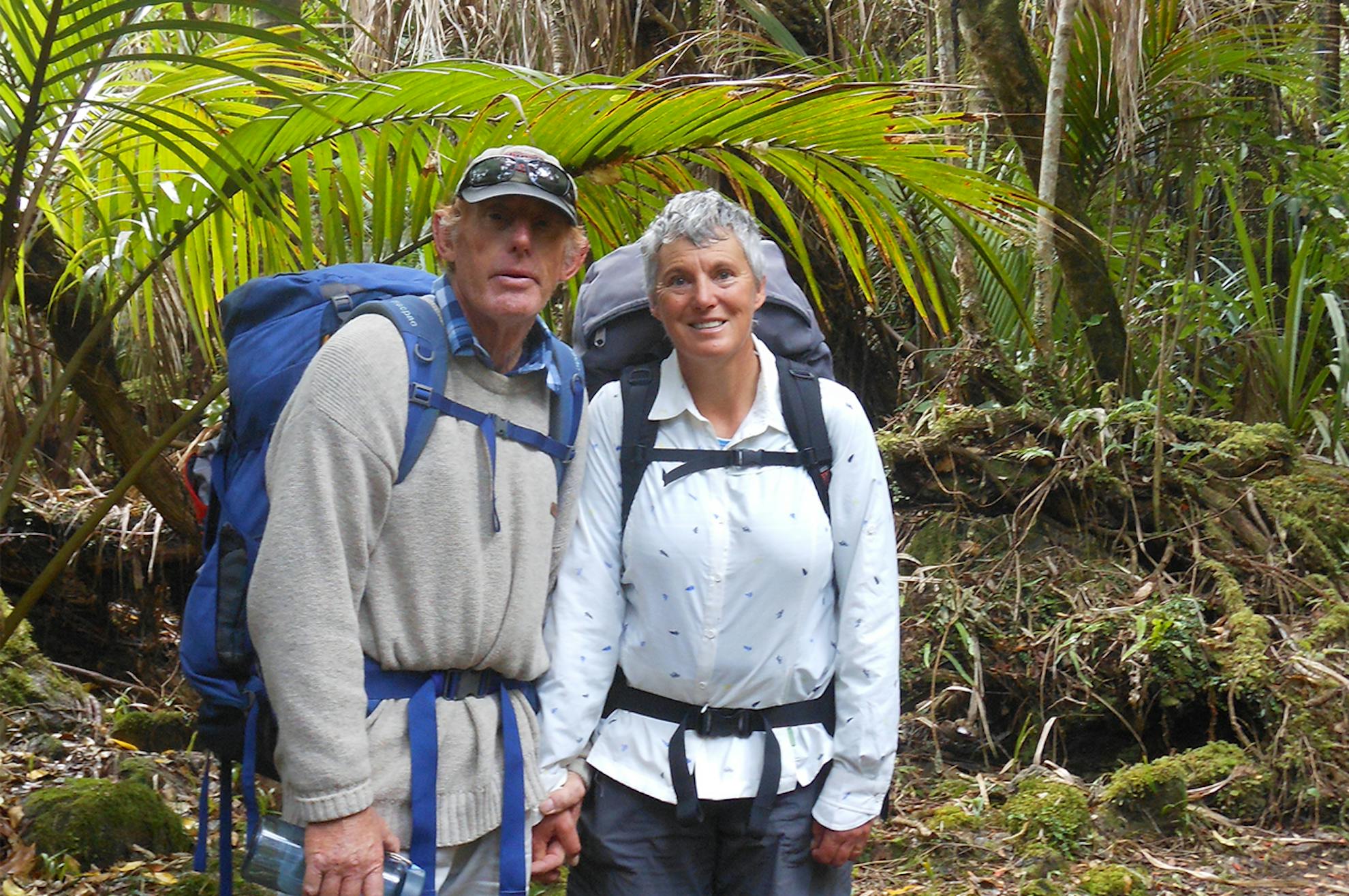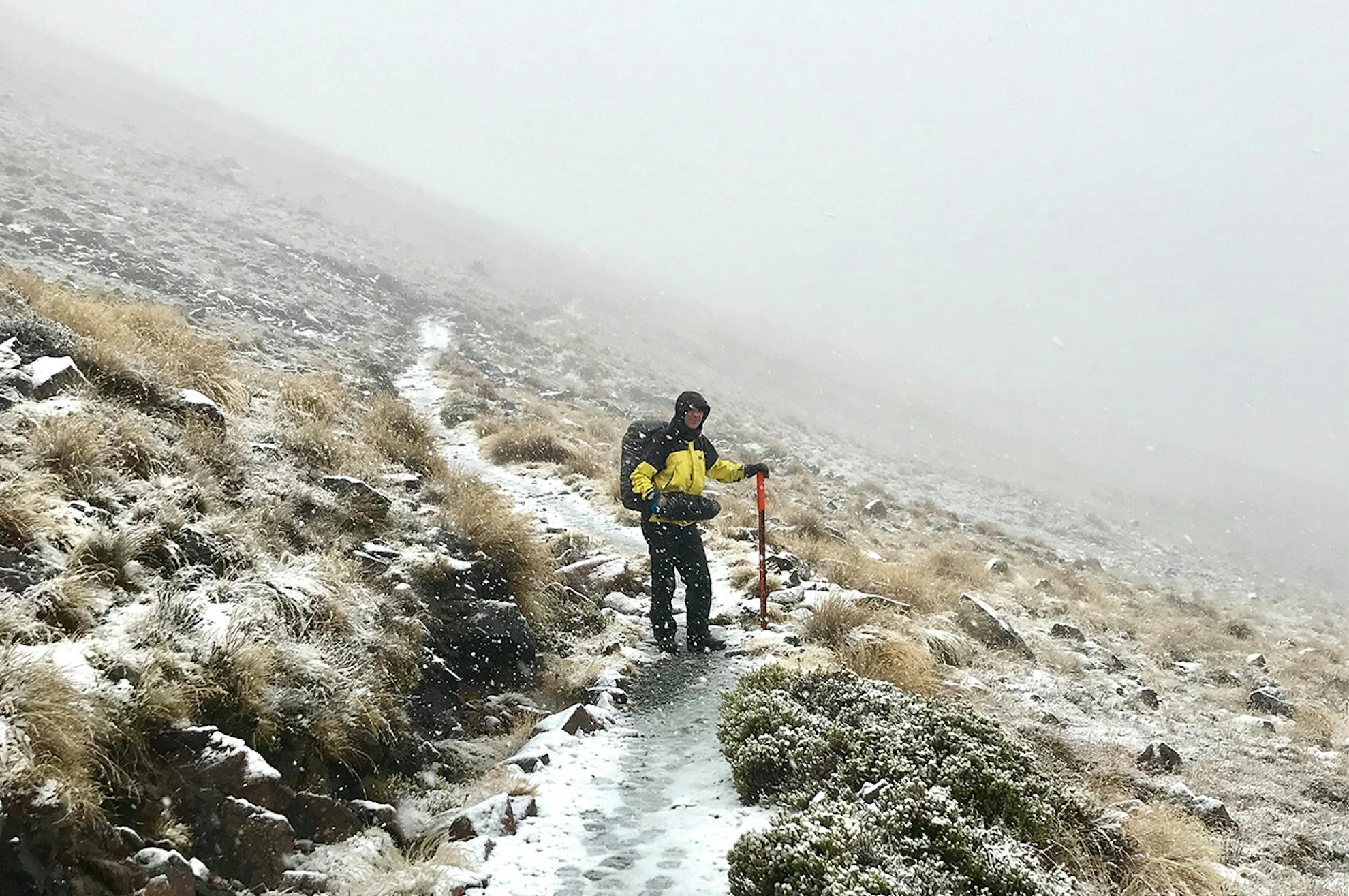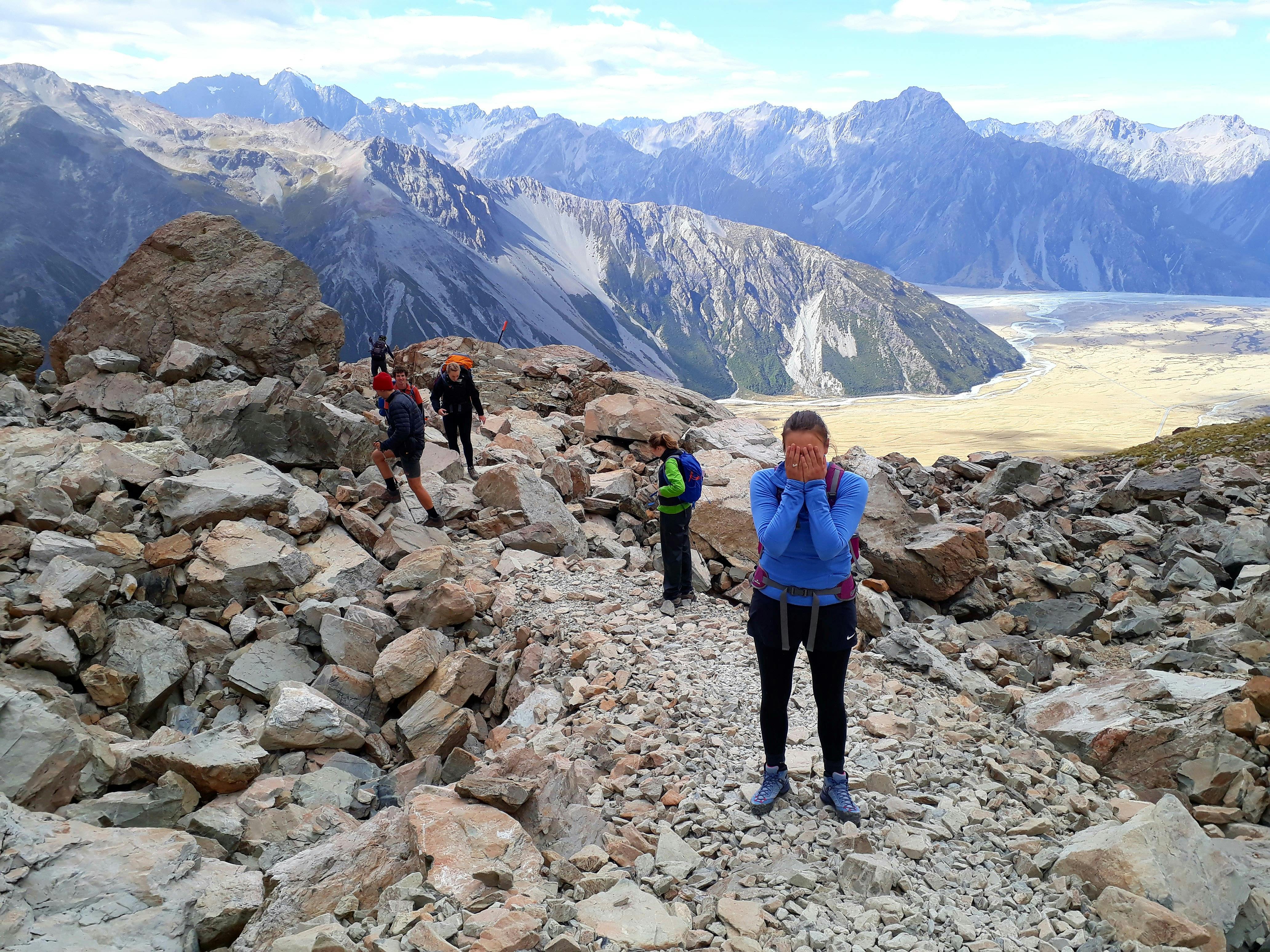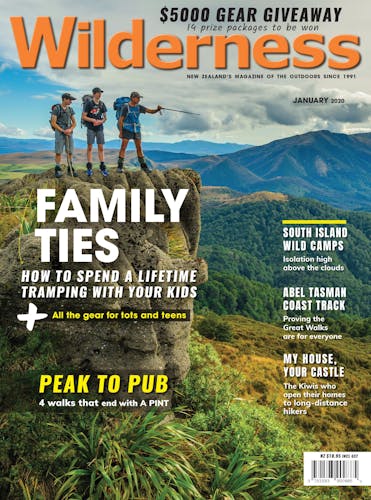Giving up is one of the hardest decisions a tramper can make, but knowing when to turn back is what makes a good tramper.
As her tramping club one by one navigated a large boulder blocking the track, doubt crept into Sharon Boulton’s mind.
She watched the way their backs twisted as each group member eased around the obstacle, and her uncertainty grew – her back might not move that way.
If it didn’t, she might get stuck, or worse, fall.
It was the first outing of a week-long trip with her club – a day walk to Carol Hut in Arthur’s Pass National Park – and Boulton didn’t want to spoil the day with an avoidable accident.
“The drop off either side would compromise the safety of anyone who would come to my aid as well as my own, should sudden pain and loss of movement inflict itself,” she says.
Boulton has struggled with certain core movements since a horse-riding accident ruptured a disc in her back 35 years ago.
She was advised by doctors to ‘take it easy’, but as an active farmer with a love of the outdoors, she found the advice hard to follow and eased herself into tramping.
As she progressed from day trips to overnight trips, even her surgeon was surprised at her improvements – but her injury never fully recovered, and Boulton knew her limitations.
Seldom has her injury held her back, but the route to Carol Hut had her beaten, and with tears welling in her eyes, she was forced to make a decision every tramper dreads.
“I had to turn back as I watched the rest of my party carry on,” she says.
“Reminding myself of all the wonderful tramps I have completed with fantastic people, along with my surgeon telling me I’m lucky to be able to walk at all, put life in perspective.”
Boulton decided she would wait on the track while the other club members continued to the hut for lunch, collecting her on their return.
If the weather deteriorated as expected, she would meet the group back at the car.
Boulton was prepared for the conditions, but with bad weather closing in, she started the walk back, keeping her safety training at the forefront of her mind.
“[When you find yourself] suddenly alone, it’s easy to think of taking a shortcut as loneliness can set in,” she says. “The track looks completely different when you’re on your own and at one point I scrambled under a large tree that had fallen across the track, and came out off-track.”
As she made her way back to the route, her friends caught up with her.
Boulton has no regrets about turning back, and enjoyed the rest of her tramping club trip.

She says it’s important to treat each new day as a different day when tramping.
“Just because you crossed that stream or made it to the hut in driving rain once, it doesn’t guarantee a positive outcome every time,” she says.
“Focused, driven people achieve great things but as trampers know, there comes a moment in which you need to stop and take a few moments to assess the situation – too many have lost their lives with the ‘she’ll be right’ attitude.”
Peter Latham also knows the disappointment of abandoned plans.
The Auckland landscape photographer had driven to Te Anau to walk the Kepler Track with a friend when wild weather descended.
They made it to a snowy Luxmore Hut in poor conditions – much worse than forecasted – but were heartened on arrival by reports of improving weather the following day.
When morning dawned with no improvements, the hut occupants were in no hurry to leave, and took their time getting ready in the hope the weather would settle.
Sometimes you’ve just got to have a plan B,
and not be stupid about plugging along regardless
Eventually, Latham made the call to crack on to Iris Burn Hut, so they would have time to turn back and return to the car if the tops proved impassable.
“We walked for an hour towards the ridgeline, and it was just insane – there was gale force snow blowing across the track,” Latham says.
“With weather, it’s the luck of the draw and you get what you’re dealt – if you’re lucky it’s going to be good, but if it turns bad, you’ve got to know when to make that call.”
‘Gutted’ at the idea of giving up, the pair turned back and were shocked to see a number of lesser prepared trampers continuing on.
A couple of young European visitors who had spent much of the night huddled around the hut fire trying to dry their gear – including soaked sneakers – were among those who persevered in near white-out conditions.
“Their toes must have been frozen,” Latham says. “I’d love to know how those guys got on.”

Latham says visitors can feel the pressure to push on more than Kiwi trampers.
“When visitors are on a schedule, and they have just three weeks to do the whole country, they might not be willing to compromise when the weather turns,” he says.
Not to be defeated, Latham and his friend turned their attention to the Routeburn Track, and enjoyed an overnight trip to Lake Mackenzie instead, in perfect sunshine.
“Sometimes you’ve just got to have a plan B, and not be stupid about plugging along regardless,” he says.
In a study of 53 tramping fatalities between 2007 and 2017, Mountain Safety Council discovered social or psychological factors contributed to 62 per cent of deaths.
Of these fatalities, tramping with a goal-focused mentality was attributed to 20 deaths – the single highest causation factor present in the study.
Findings also showed that a goal-focused mindset was particularly common in specific fatality types, such as river crossings (64 per cent) and hypothermia (67 per cent).
“It’s great to have a goal, but always be aware of the environment, track conditions, weather and your ability to carry on,” says MSC chief executive Mike Daisley. “It’s not a failure to turn back. Question if your ‘summit fever’ is the reason you aren’t turning back.”
Daisley recommends preparing an alternate or emergency plan for each day of a tramp.
“Points on the track should be determined where you will stop to assess whether or not to continue ahead,” he says.
“Determine what signs might indicate the need for a change of plans, identify extra supplies that may need to be packed for all plan options and let a trusted person know what the backup plans are.”








